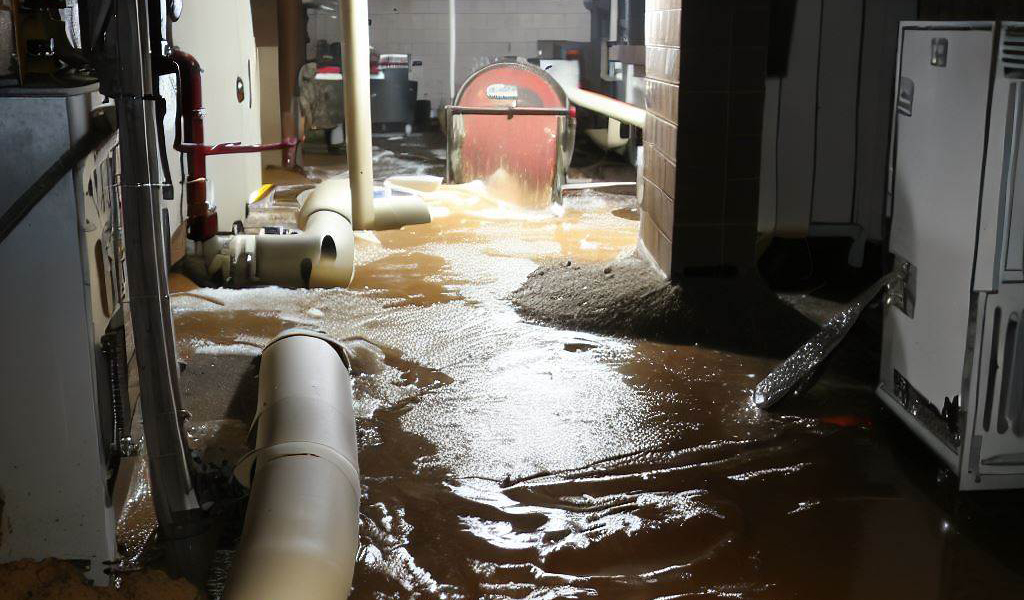Sewer/Wastewater Overflow Impacts: Understanding the Costs and Environmental Health and Safety Risks.
Sewer and wastewater overflows can have a significant impact on citizens, cities, and the environment. These overflows can occur for various reasons, such as heavy rainfall, blockages, illicit connections, aging infrastructure, and lack of collection system conveyance capacity. When overflows happen, raw sewage can enter homes, businesses, and streets and ultimately pollute the environment. This blog will discuss the impact of sewer/wastewater overflows on citizens, the city, the environment, and citizen health and safety.
1- Impact to Citizens
One of the most immediate impacts of sewer/wastewater overflows is the cost to citizens. A sewage backup into homes and businesses will cause significant damage and pose significant health risks. Citizens may need to pay for cleanup, repairs, and replacement of damaged items such as carpets, furniture, and electronics. Additionally, citizens may experience health effects from exposure to raw sewage, including gastrointestinal illness, respiratory problems, and skin infections. These costs can be significant and may cause financial strain for affected individuals and families.

2-Impact on the City
Sewer/wastewater overflows also have a significant cost to the city. In addition to potential legal liabilities, cities may face fines from regulatory agencies for violating environmental laws. Repairing & replacing damaged infrastructure can be expensive and may require significant resources. Additionally, cities may face public backlash and a loss of trust from citizens who feel that their health and safety have been compromised.
3-Impact on the Environment
Perhaps the most significant impact of sewer/wastewater overflows is the environmental health and safety risks they pose. Raw sewage contains a variety of pathogens, bacteria, and viruses that can contaminate waterways, beaches, and ecosystems. This contamination can harm wildlife, disrupt food chains, and damage habitats. Additionally, sewage overflows can increase the risk of waterborne illnesses in humans, including cholera, typhoid, and hepatitis. These risks are especially significant for vulnerable populations such as children, the elderly, and those with compromised immune systems.

4-Impact on Citizen Health and Safety
Sewer/wastewater overflows can pose significant risks to the health and safety of citizens. Exposure to raw sewage can cause serious health problems, including gastrointestinal illness, respiratory problems, and skin infections. In addition, sewage overflows can increase the risk of waterborne illnesses, which can be especially dangerous for vulnerable populations. To reduce these risks, it is essential to implement strategies to prevent and manage sewer/wastewater overflows.
5-Innovative Solutions to Reduce Overflows
To prevent and mitigate sewer/wastewater overflow incidents, cities can invest in innovative solutions, such as ssoAlert®, to detect, mitigate and ultimately reduce overflows and their impacts. An array of ssoAlert sanitary sewer monitoring devices designed for wastewater management and sewer system monitoring can help detect and address issues before they become major problems. Infratech’s cloud Ai system, designed specifically for sanitary sewer overflow prevention, can assist municipalities to cost-effectively direct their resources for sewer system upgrades. ssoAlert can also assist in forming an emergency sewer response plan and help prevent and manage overflows. Improved sewer system management and infrastructure repair can also help reduce overflows and improve overall system performance.
Conclusion
Sewer/wastewater overflows can significantly impact citizens, cities, and the environment. Understanding the costs and environmental health and safety risks associated with these incidents is essential for prevention and mitigation. By investing in infrastructure improvements, monitoring systems, such as ssoAlert, and sound emergency response plans, cities can help protect the health and safety of their citizens and the environment.
References:
Environmental Protection Agency. (2020). Combined Sewer Overflows (CSOs). Retrieved from https://www.epa.gov/npdes/combined-sewer-over&
